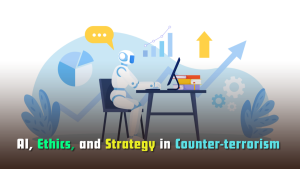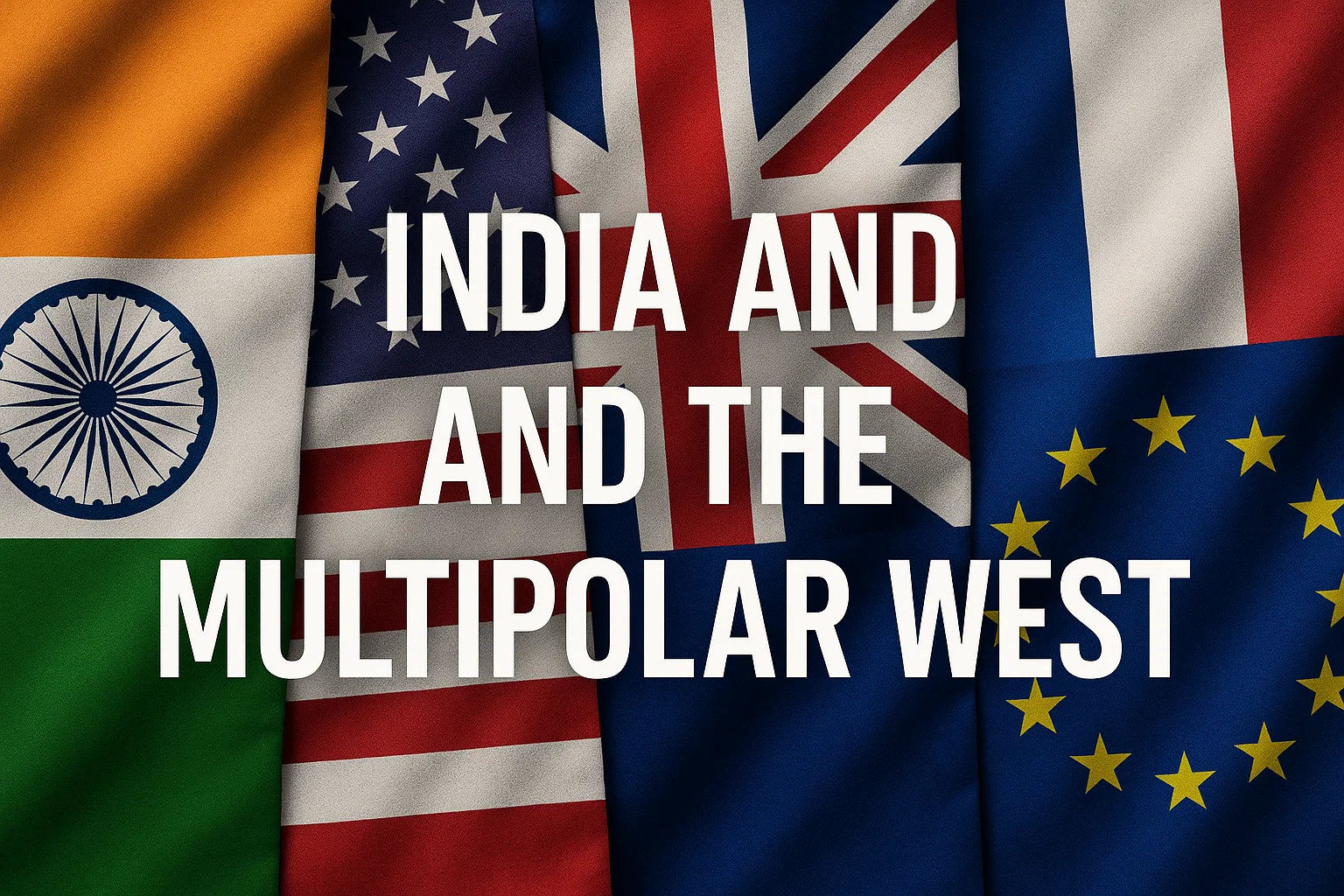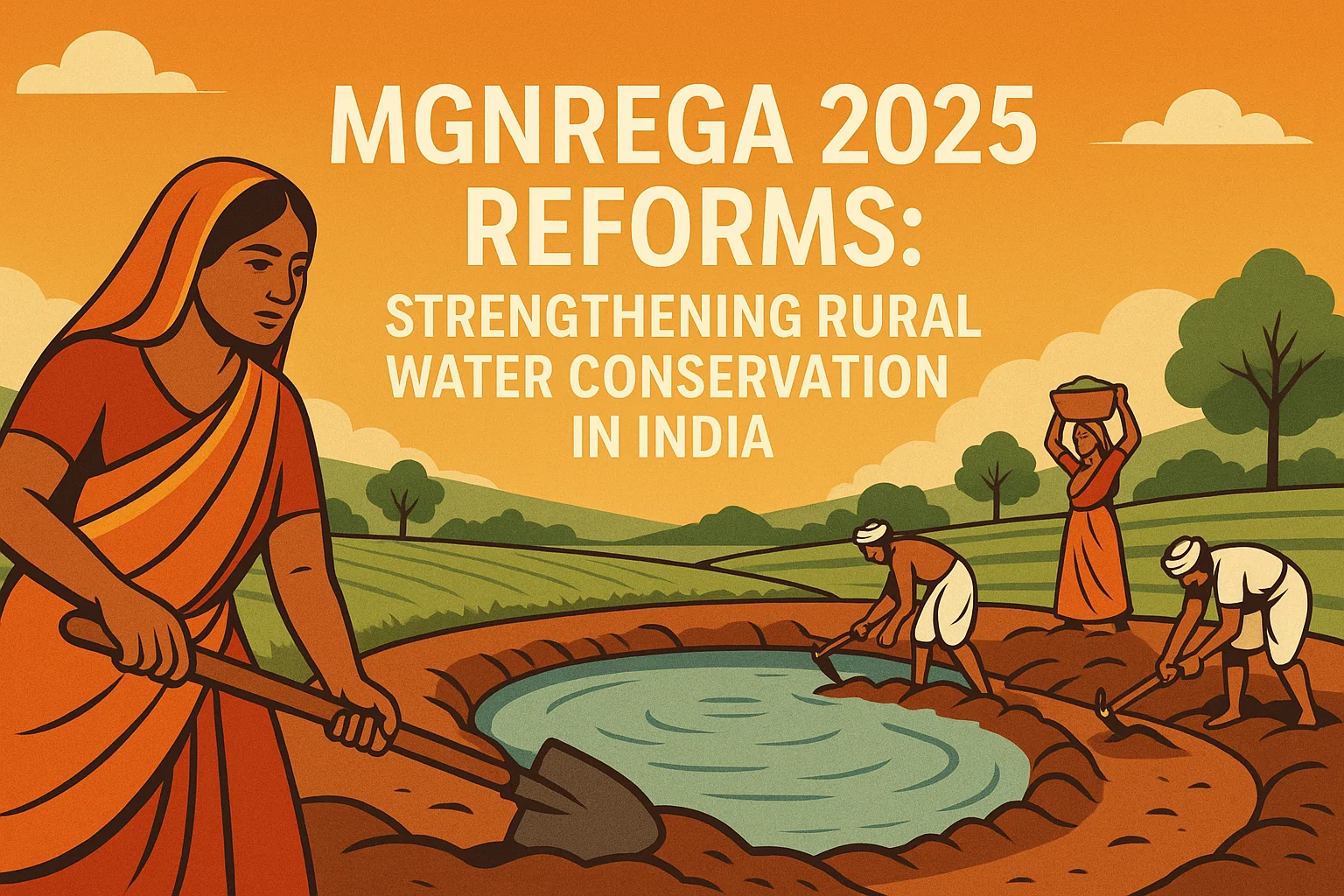Daily Current Affairs 09th July 2025
In today’s edition of current affairs, we highlight some of the most significant global and national developments shaping policy, health, environment, and science. From maternal health goals to climate negotiations and cutting-edge astronomy, here are the key topics we’re covering:
1) Fostering a Commitment to Stop Maternal Deaths
2) Bonn Climate Conference 2025
3) Climate Change Reshaping India’s Coastline
4) Why Women-led MSMEs in India Still Struggle for Credit Access
5) UAE’s Nomination-Based Golden Visa Scheme for Indians and Bangladeshis
6) Plant Treaty Amendments and Seed Sovereignty
7) Nipah Virus Outbreak in Kerala (July 2025)
8) Vera C. Rubin Observatory
Fostering a Commitment to Stop Maternal Deaths
Context: Despite remarkable progress in maternal healthcare, India’s Maternal Mortality Ratio (MMR) still stands at 93 deaths per 1,00,000 live births as per the Sample Registration System (SRS) 2019–21.
What Is Maternal Mortality and How Is It Measured in India?
- Maternal mortality refers to the death of a woman while pregnant or within 42 days of the termination of pregnancy, due to complications related to or aggravated by pregnancy or its management. Accidental or incidental causes are not included.
- India categorises states into three clusters to monitor MMR more effectively:
- Empowered Action Group (EAG) States: Bihar, UP, MP, Rajasthan, Odisha, Chhattisgarh, Jharkhand, Uttarakhand, and Assam.
- Southern States: Kerala, Tamil Nadu, Karnataka, Andhra Pradesh, and Telangana.
- Other States/UTs: Maharashtra, Gujarat, West Bengal, Punjab, Haryana, etc.
Which Indian States Have the Lowest and Highest Maternal Mortality?
- Among the southern states, Kerala leads with the lowest MMR of 20, followed by Telangana (45), Andhra Pradesh (46), Tamil Nadu (49), and Karnataka (63).
- In contrast, Assam (167) and Madhya Pradesh (175) report the highest MMRs among the EAG states.
- In the “Other States” category, Maharashtra performs well (MMR: 38), while Haryana (106) and West Bengal (109) lag behind.
What Are the Three Major Delays Leading to Maternal Deaths in India?
As identified by Deborah Maine, and integrated into India’s Safe Motherhood training programs since 1992, three delays often result in maternal deaths:
- Delay in Seeking Care: Families often delay recognising pregnancy-related complications due to financial, social, or cultural factors.
- Misconceptions that childbirth is a purely natural event exacerbate this problem.
- However, ASHA workers and Self-Help Groups have helped overcome these delays by promoting awareness and facilitating institutional deliveries.
- Delay in Reaching Healthcare Facilities: In remote villages, forests, or island regions, transportation remains a critical barrier.
- Despite the efforts of the 108 ambulance service under the National Health Mission (NHM), many women still die en route due to poor road access or long travel times.
- Delay in Receiving Adequate Medical Care: Once at a healthcare facility, delays in treatment due to shortage of specialists, non-functional operation theatres, lack of blood banks, and administrative inefficiencies can turn fatal.
- Though First Referral Units (FRUs) were planned for every district, many still lack essential staff like obstetricians and anaesthetists.
What Are the Leading Medical Causes of Maternal Deaths?
- Postpartum Hemorrhage (PPH): Excessive bleeding due to uterine atony remains the top cause. Immediate blood transfusion is crucial, especially if the mother is anaemic.
- Obstructed Labour: Common in young, stunted, or malnourished mothers with narrow pelvises. Timely Caesarean sections can prevent uterine rupture and foetal death.
- Hypertensive Disorders: Uncontrolled blood pressure can lead to seizures and coma, requiring urgent medical intervention.
- Sepsis: Poor hygiene during delivery, unsafe abortions, and untreated infections lead to deadly infections.
- Pre-existing Diseases: Conditions like malaria, tuberculosis, and chronic urinary infections exacerbate pregnancy risks, especially in EAG states.
How Can India Prevent Maternal Deaths More Effectively?
-
For EAG States:
-
-
- Focus on early antenatal registration, routine check-ups, and strengthening FRUs.
- Ensure availability of specialists and blood banks in community health centres.
-
-
For Southern States and Better-Performing Regions:
-
- Emphasise quality emergency obstetric care.
- Adopt the Kerala Model of Confidential Maternal Death Reviews.
- Train obstetricians in advanced techniques like uterine artery clamping, suction cannula use, and managing rare complications such as amniotic fluid embolism.
Why Is the Kerala Model of Maternal Health a Benchmark?
- Kerala’s comprehensive approach — which includes confidential reviews, early intervention protocols, and integration of mental health care — has helped reduce its MMR to just 20, one of the lowest globally.
- From managing antenatal depression to handling fatty liver-induced hepatic failures, Kerala’s model is both proactive and precise.
With focused strategies tailored to the needs of specific state clusters, India can accelerate progress toward SDG Goal 3.1 — reducing global maternal mortality to less than 70 per 1,00,000 live births by 2030.
Bonn Climate Conference 2025
Months ahead of COP30, Bonn climate and pressure test
Context: As the world prepares for the crucial COP30 summit in Belém, Brazil, the Bonn Climate Change Conference 2025 served as a key moment to assess global climate ambition.
More on News
- This mid-year gathering of negotiators, scientists, civil society actors, and policymakers aimed to lay the groundwork for COP30.
- However, Bonn 2025 was marred by procedural delays, financial disagreements, and deepening divides between developed and developing nations — raising concerns over the future of international climate cooperation.
Why Did the Bonn Talks Begin with a Deadlock?
- The conference faced a two-day delay in adopting the agenda, largely due to objections by the Like-Minded Developing Countries (LMDCs), including India. They insisted on the inclusion of:
- Article 9.1 of the Paris Agreement (obligating developed nations to provide climate finance), and
- Unilateral trade measures, such as carbon border taxes, which are seen as unfair trade barriers.
- While developed countries, led by the EU, resisted these additions, a compromise was reached to address them through informal consultations, highlighting the ongoing North-South divide in climate negotiations.
What Progress Was Made on the Global Goal on Adaptation (GGA)?
- A major focus of Bonn 2025 was the Global Goal on Adaptation, which seeks to: Reduce climate vulnerability, Build adaptive capacity, and Enhance resilience.
- Out of nearly 9,000 indicators, about 490 were shortlisted, with efforts underway to finalise a set of 100 key indicators across sectors such as health, agriculture, water, and infrastructure.
- India and other LMDCs pushed for flexible, context-specific indicators, while disagreements emerged over whether to include indicators on finance, capacity building, and technology transfer.
- Despite contentious talks, parties agreed to a headline indicator set to be supplemented by nationally tailored sub-indicators.
- However, no consensus was reached on including indicators linked to means of implementation, such as finance.
Is the Mitigation Work Programme Delivering Results?
-
- The Mitigation Work Programme (MWP) — designed to keep the world on track for the 1.5°C temperature target — also came under review.
- While many countries acknowledged its potential, several developing nations, including India and members of the African and Arab Groups, cautioned against turning it into a pressure mechanism.
-
Key discussions focused on:
-
- Maintaining the “safe space” for dialogue,
-
- Avoiding new commitments,
-
- Enhancing international cooperation, and
-
- Sharing mitigation tools through digital platforms (a proposal backed by Brazil and Egypt but questioned by the EU and AOSIS).
Where Does the Loss and Damage Mechanism Stand?
- Some progress was made in reviewing the Warsaw International Mechanism for Loss and Damage (L&D) and operationalising the Santiago Network for technical assistance.
- Developing countries, including India, called for: Faster, scaled-up funding, and Integration of non-economic loss, human rights considerations, and technical assistance into national climate plans.
- Still, gaps in funding and clarity around the Santiago Network’s operations remain unresolved, setting the stage for further debate at COP30.
How Was Just Transition Addressed at Bonn 2025?
The Just Transition Work Programme explored how energy transitions can be equitable and inclusive. Key points of discussion included:
- Respecting labour rights, indigenous knowledge, and gender equality,
- Managing the socio-economic impacts of carbon border taxes, and
- Addressing the role of critical minerals in clean energy supply chains.
- Consensus emerged on aligning these aspects with developmental needs and national contexts, though trade-related concerns remain a sticking point.
What Sparked the Gender Action Plan Dispute?
- A new Gender Action Plan also stirred debate, particularly over terms like gender diversity and intersectionality.
- Proposed areas of focus included: Unpaid care work, Sexual and reproductive health, and Gender-based violence.
- There was strong support for using gender-disaggregated data, traditional knowledge, and gender-responsive budgeting to inform climate action.
Why Is Climate Finance Still Gridlocked?
- Climate finance remained the most divisive topic across negotiation tracks.
- Key concerns included: The lack of transparency in finance reporting (Article 9.5 of the Paris Agreement), Disparity between promised and actual disbursements, and Disagreements over the nature of funds — grants vs loans, public vs private, and mitigation vs adaptation.
- Developing nations called for: A clear burden-sharing framework, Tripling adaptation finance by 2030, Earmarked funding for Small Island Developing States (SIDS), and Innovative revenue sources, such as financial transaction taxes.
- The Baku to Belém Roadmap — aiming to mobilise $1.3 trillion annually — remains in the spotlight, but its structure and responsibility sharing mechanisms are yet to be agreed upon.
Climate Change Reshaping India’s Coastline
Rising seas, shifting lives and a test of democratic values
Context: India’s coastlines are under increasing threat from the intensifying impacts of climate change.
More on News
- Rising sea levels, saltwater intrusion, and unregulated development are not only reshaping the physical landscape but also causing massive social and economic displacement.
- Coastal communities dependent on fishing, agriculture, and marine ecosystems are losing their homes and livelihoods, with many forced to migrate to urban areas lacking state support or legal protection.
Which Regions Are Most Affected by Coastal Displacement in India?
- In Odisha, entire villages like Satabhaya have been submerged, with survivors relocated to poorly equipped government resettlement colonies.
- In Karnataka’s Honnavar taluk, traditional fishers are losing land to port development, tourism, and mangrove destruction.
- Similar displacement crises are visible in Nagapattinam (Tamil Nadu), Kutch (Gujarat), and the lowlands of Kerala, all of which are facing rapid coastal degradation.
How Do Infrastructure and Industrial Projects Worsen Coastal Vulnerability?
- Government initiatives like Sagarmala, commercial aquaculture, and energy infrastructure are accelerating ecological collapse.
- Coastal buffer zones like mangroves, sand dunes, and wetlands are being cleared, leaving communities vulnerable to extreme weather.
- Environmental clearances often ignore cumulative climate risks, thereby reinforcing displacement and livelihood loss.
What Happens to Displaced Coastal Populations in Indian Cities?
- Displaced families are absorbed into informal urban labour markets, working in sectors such as construction, domestic work, and brick kilns in cities like Mumbai, Chennai, Hyderabad, and Bhubaneswar.
- These migrants often suffer:
-
- Debt bondage through wage advances.
- Lack of legal protection under India’s labour laws.
- Gender-based exploitation in domestic work.
Does India Have a Legal Framework to Protect Climate Migrants?
- India currently lacks a dedicated legal framework for climate-induced displacement.
- While Article 21 guarantees the right to life and dignity, no law addresses the specific needs of slow-onset climate migrants.
- Existing laws such as Disaster Management Act, 2005, Environment (Protection) Act, 1986, Coastal Regulation Zone (CRZ) Notifications are either reactive or limited to conservation goals, failing to integrate socio-economic rehabilitation or migration planning.
- Even the CRZ Notification, 2019, has been criticised for easing zoning norms to favor tourism and industry over community rights.
How Do Labour Laws Fail to Address Climate Migration in India?
- India’s Labour Codes, including those governing construction and domestic work, are silent on climate-induced migration.
- This legislative gap leaves displaced workers without decent work protections, healthcare, housing, or access to social security—core elements of climate resilience and human dignity.
What Role Have Grassroots Movements Played in Defending Coastal Rights?
- Despite state inaction, coastal communities have shown remarkable resilience.
- Movements like Adani port protests at Ennore Creek (Tamil Nadu), Pattuvam Mangrove Protection in Kerala and Save Satabhaya Campaign in Odisha have challenged environmentally destructive projects.
- Yet, environmental defenders face increasing intimidation, surveillance, and criminalisation, undermining India’s constitutional right to protest and associate.
Why Must India Adopt a Rights-Based Approach to Climate-Induced Displacement?
A rights-based framework must:
- Integrate climate migrants into urban planning and labour policies.
- Ensure access to education, healthcare, decent work, and housing.
- Reform labour laws to explicitly include protections for climate migrants.
- Rebalance coastal management to center ecological sustainability and community consent.
- India’s pledge to Sustainable Development Goal (SDG) Target 8.7 — eliminating forced labour and ensuring decent work — hinges on how it addresses climate displacement.
If climate change is the defining challenge of the 21st century, then climate displacement must be at the core of India’s adaptation strategy. Ensuring the rights, safety, and dignity of displaced communities is not just an environmental concern — it is a constitutional and moral imperative.
Why Women-led MSMEs in India Still Struggle for Credit Access
Women MSMEs Grapple With Ineffective Credit Schemes
What is the current status of women-led MSMEs in India?
- As of 2024, women-owned enterprises constitute approximately 20% of all registered MSMEs in India, according to the Ministry of MSME’s Udyam portal.
- While this figure shows growing participation, it pales in comparison to women’s share in the population (49%) and workforce (about 26% in MSMEs). Moreover, women-led MSMEs contribute only about 10% of the sector’s turnover, indicating low scalability and marginalisation in enterprise growth.
- According to the Economic Survey 2024–25, women dominate sectors such as handloom (72%), handicrafts (56%), khadi (80%), and sericulture (50%), yet own only 22% of MSMEs, and merely 7% of medium-sized MSMEs. This skewed ownership structure highlights the critical gap between labour participation and leadership.
Why do women-led MSMEs struggle for access to credit?
- Collateral Constraints and Asset Ownership Gap
-
Gender Bias in Credit Decisioning
-
-
- International Finance Corporation (IFC) reports women need twice the number of bank visits compared to men to get loans sanctioned.
- A survey by Kinara Capital found women entrepreneurs had a loan default rate of 3.4%, lower than men’s 4.6%, yet still faced bias in approvals.
-
-
Inadequate Implementation of Government Schemes
-
- Under PM MUDRA Yojana, though women hold 64% of loan accounts, they receive only 41% of the total disbursed amount.
- Despite high enrolment, schemes often fail to deliver timely, adequate, and collateral-free credit to women.
Who are the most affected women entrepreneurs?
- Rural and First-generation Entrepreneurs
-
- Women in rural or semi-urban areas form a significant part of informal enterprises. As per government data, 70.5% of IMEs registered on Udyam Assist Portal are women-owned.
- Low financial literacy, digital divide, and lack of institutional support hit these women hardest.
- Micro-entrepreneurs
- Over 90% of MSMEs are micro-enterprises, and 95% of women-owned units employ fewer than six workers.
- Over 90% of MSMEs are micro-enterprises, and 95% of women-owned units employ fewer than six workers.
Where are women-led MSMEs concentrated, and what sectors do they dominate?
Women-led MSMEs are more concentrated in rural India (22%) than in urban areas (18%), and largely operate in labour-intensive traditional sectors such as:
- Handicrafts
- Khadi and village industries
- Sericulture
- Agro-processing
Despite being dominant in these sectors in terms of workforce participation, ownership and leadership remain male-dominated. For instance, men lead most enterprises in the manufacturing and export-oriented value chains, limiting women’s upward mobility.
- They are typically home-based, informal, and lack scale, market access, or record-keeping, making them ineligible for formal credit.
When did the government initiate corrective actions, and how effective have they been?
- PM MUDRA Yojana (2015) – Collateral-free loans for non-farm enterprises.
- Stand-Up India Scheme – Loans for women and SC/ST entrepreneurs.
- Udyam Registration Portal (2020) – For formalising informal micro-enterprises.
- Udyam Assist Platform (2023) – For recognizing informal businesses as priority sector lending beneficiaries.
Gaps in Implementation:
- Credit remains risk-averse and collateral-driven, which disadvantages women.
- Administrative inefficiencies, poor outreach, and lack of gender-sensitive banking practices persist.
- According to SIDBI, the credit gap for women is 35%, compared to 20% for men.
How does this affect India’s broader economic and social goals?
-
Economic Potential
-
-
- According to McKinsey Global Institute, providing equal opportunities to women could add USD 770 billion to India’s GDP by 2025.
- Bain & Company suggests that women-led entrepreneurship can create 150–170 million jobs by 2030 — more than 25% of the total needed.
-
-
Social Impact
-
- Studies show women spend up to 90% of their income on family health, education, and nutrition — a direct link to intergenerational welfare.
- MSMEs led by women hired 11% more women employees and created one-third of new jobs for women, according to Kinara Capital MSME Insights (2024).
How can the financing gap for women MSMEs be effectively addressed?
- Gender-Lens Lending:
- Mandate a gender quota in MSME credit disbursement through commercial banks and NBFCs.
- Promote alternate scoring models that do not rely solely on collateral, e.g., AI/ML-based risk assessments.
- Subsidised Interest and Tax Incentives:
Case Study: Kinara Capital’s HerVikas Programme
- Launched to provide collateral-free business loans to women MSMEs.
- Includes features like interest discount, 60-day repayment holiday, and AI-powered bias-free credit decisioning.
- Disbursed over ₹781 crore, targeting ₹1,000 crore by FY25.
- Resulted in a 21% rise in net income for women-led enterprises.
This model demonstrates that innovative, tailored financial products can make a real difference if backed by gender-sensitive delivery mechanisms.
- Offer interest subvention for first-time women borrowers.
- Provide tax rebates for investors or financial institutions supporting women-led MSMEs.
-
Boosting Financial and Digital Literacy:
- Integrate financial inclusion modules into rural self-help groups (SHGs) and Common Service Centres (CSCs).
- Expand schemes like Drone Didi and Digital Didi to incorporate digital onboarding for e-commerce platforms.
-
Strengthening Last-mile Credit Infrastructure:
- Encourage growth of Women-centric NBFCs and FinTechs that cater specifically to micro businesses.
- Public-private partnerships to support community-based lending models with minimal paperwork.
UAE’s Nomination-Based Golden Visa Scheme for Indians and Bangladeshis
UAE’s Nomination-Based Golden Visa Welcomes Indian Talent with Lifetime Benefit
Context: In a significant policy shift aimed at deepening talent-based immigration, the United Arab Emirates (UAE) has launched a pilot nomination-based Golden Visa scheme for citizens of India and Bangladesh.
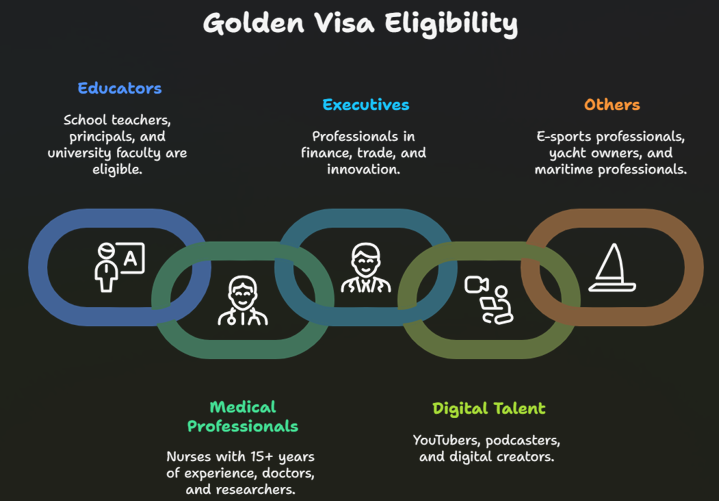
What is the UAE’s Golden Visa Scheme?
Definition: The Golden Visa is a long-term residency permit offered by the UAE to foreign nationals, allowing them to live, work, or study in the country without the need for a local sponsor.
Key Features of Traditional Golden Visa:
- Tenure: 5 to 10 years, renewable.
- Requires investment in UAE property (minimum AED 2 million ≈ ₹4.66 crore) or business.
How Does This Compare to Global Residency-by-Investment Models?
-
Examples of Other Countries:
-
-
- Saint Kitts and Nevis (Caribbean): Citizenship by investment since 1984.
- Portugal & Greece: Golden visas via real estate investment post-2008 crisis.
- UK: Discontinued Tier 1 investor visa in 2022 due to security concerns over illicit money.
-
-
UAE’s Model Stands Out By:
-
- Prioritising skill over capital.
- Offering lifetime residency instead of time-bound renewables.
- Reducing entry barrier cost to ~₹23 lakh.
- The policy is currently restricted to residents of India and Bangladesh in its pilot phase, with potential expansion to China and other CEPA countries.
What’s New in the Nomination-Based Golden Visa Scheme?
- Lifetime Residency: Unlike the traditional scheme, this pilot offers permanent residency.No Investment Required: No need for property or business investments.
- Flat Fee: AED 100,000 (~₹23.3 lakh).
- Merit-Based: Applicants are nominated based on qualifications and potential value to UAE society.
Why Has the UAE Introduced This New Scheme?
- Human Capital Focus: Attract skilled professionals rather than only wealthy investors.
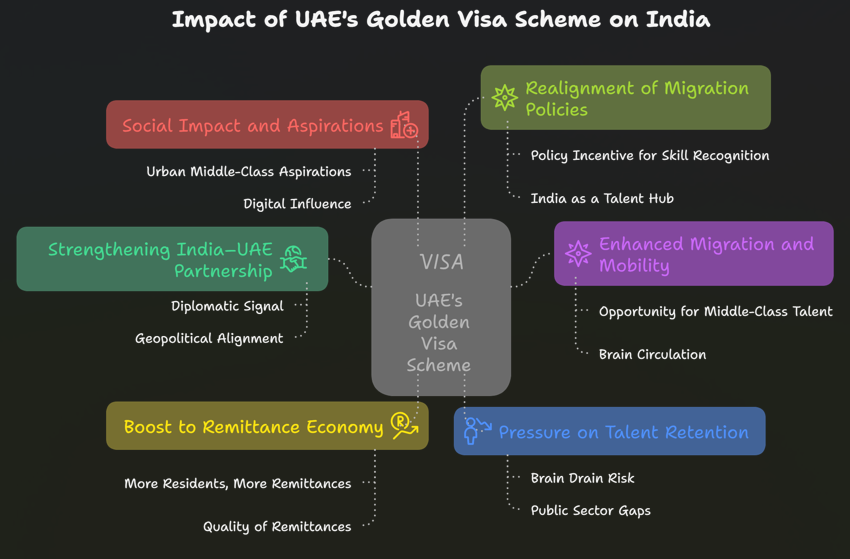
- Strengthening CEPA Relations: India is UAE’s strategic CEPA partner (agreement signed in 2022).
- Economic Diversification: Infuse expertise in science, trade, startups, healthcare, and digital sectors.
How Does This Scheme Benefit Applicants?
- Advantages Over Traditional Visa Route:
-
- No Asset Ties: Visa not revoked if asset is sold, unlike property-based visas.Inclusive: Can sponsor family (spouse, children, parents).Employment & Business: Holder can engage in business, professional work, hire domestic help.
- One-Time Fee: AED 100,000 = lifetime validity (not renewable every 10 years).
What Are the Risks or Concerns?
- Screening Criteria: Not all applicants will qualify despite payment; merit, background, and social relevance are key.
- Security Concerns: Globally, such schemes have been criticised for misuse (e.g., money laundering, asset hiding).
- Regulatory Transparency: UAE’s ICP portal doesn’t currently list the scheme’s detailed provisions.
Plant Treaty Amendments and Seed Sovereignty
Farmers, policymakers warn Centre against proposed amendments to Plant Treaty
Context: The International Treaty on Plant Genetic Resources for Food and Agriculture (ITPGRFA or Plant Treaty) is under proposed amendments, raising concerns among Indian farmers, scientists, and policymakers.
What is the Plant Treaty (ITPGRFA)?
- Adopted: November 2001 and effective from 2004.
- Plant Treaty—is a legally binding agreement under the Food and Agriculture Organisation (FAO) of the United Nations. Its primary goals are:
- Facilitating access to plant genetic resources for food and agriculture,
- Ensuring fair and equitable benefit-sharing, and
- Promoting global food security and biodiversity.
- India is a signatory to the treaty, which currently governs the Multilateral System (MLS) of 64 key food crops like wheat and rice. However, proposed amendments to the treaty in 2025 have sparked serious concerns.
What Are the Proposed Amendments and Why Is India Concerned?
- From July 7–11, 2025, the Ad Hoc Open-Ended Working Group of the Plant Treaty is meeting in Lima, Peru, to negotiate a new “Package of Measures” aimed at expanding the scope and improving benefit-sharing mechanisms.
- India is co-chairing this meeting, represented by Dr. Sunil Archak, Principal Scientist at ICAR-NBPGR, and a long-time expert in treaty negotiations.
- The amendment proposes to expand the MLS from the current 64 crops to “all PGRFA”, which includes any plant genetic resource with actual or potential value for food and agriculture.
- India would then be legally obligated to share its entire plant germplasm under SMTA governed by the Treaty’s Governing Body (GB) — not Indian law.
Concerns Raised by Indian Stakeholders
- Sovereignty and Legal Autonomy: Critics argue the amendment undermines India’s sovereign rights over its plant genetic resources. It may bypass national legislation like the Protection of Plant Varieties and Farmers’ Rights (PPV&FR) Act (2001) and Biodiversity Act (2002).
- Seed Sovereignty and Farmers’ Rights: Organisations like Bharath Beej Swaraj Manch and Rashtriya Kisan Mahasangh warn that the amendment could erode farmers’ rights to save, use, exchange, and sell seeds. The proposal is seen as a threat to community seed banks and traditional knowledge systems.
- Federalism and State Autonomy: Kerala Agriculture Minister P. Prasad emphasised that agriculture is a State subject under Schedule VII of the Constitution. He criticised the lack of consultation with State Governments and farmers’ groups.
- The Digital Seed Loophole (DSI): A growing concern is the use of DSI, where biotech companies download genetic data from public databases to develop commercial seeds without accessing physical seeds or compensating source countries like India.
Why is Civil Society Alarmed?
- Free Corporate Access Without Fair Benefit-Sharing: Expanding to “all PGRFA” enables multinational corporations to freely access seeds under international rules. These corporations can delay commercial announcements, switch access models, and evade benefit-sharing obligations.
- Loss of Control Over Biodiversity: Plant genetic resources used in biotech, food processing, or medicine could be monetised by foreign companies, with no revenue shared with India. Seeds could be developed into expensive medicines and sold back to India’s own public health systems.
- Erosion of Farmers’ and Indigenous Communities’ Role: Farmers, especially women and Indigenous cultivators, have nurtured traditional varieties for generations. Their exclusion from consultation violates their rights and knowledge systems.
What India Must Do?
- Reject proposals that expand MLS to include all PGRFA without protections.
- Push for regulation and benefit-sharing on DSI.
- Uphold national laws such as the PPV&FR Act and Biodiversity Act.
- Ensure federal consultation with states and farmer groups.
- Clarify that the co-chair’s proposals do not represent India’s official stand.
Nipah Virus Outbreak in Kerala (July 2025)
Batting for prevention
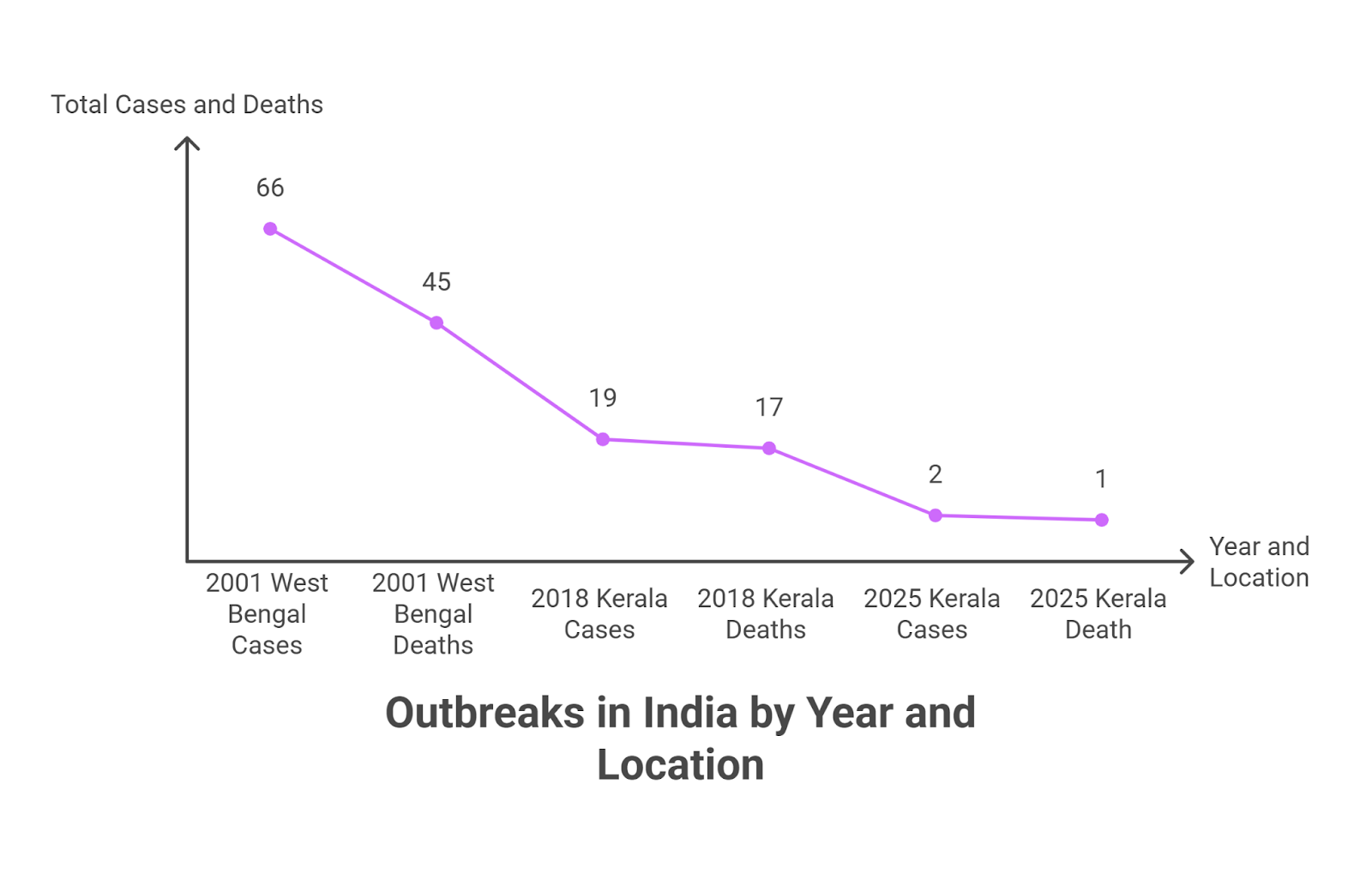
Context: Kerala has reported two confirmed cases of Nipah virus infection, including one fatality (an adolescent girl from Malappuram) and a 38-year-old woman from Palakkad battling for life. The resurgence of Nipah has once again placed India’s health infrastructure on high alert due to the virus’s high case fatality rate (CFR) and zoonotic origin.
Why is Even One Case a Red Alert?
- Extremely High Fatality Rate: Mortality rate ranging between 40% and 75%. Nipah is considered one of the most dangerous emerging pathogens in the world.
- Human-to-Human Transmission: Escalates the risk of local and regional spread.
- Lack of Treatment Options: No antiviral therapy or vaccines are currently available.
- Healthcare System Overload: Each outbreak demands intense surveillance, quarantine, contact tracing, and PPE measures, straining resources.
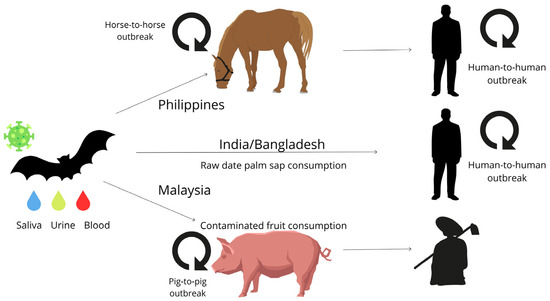
What Is the Nipah Virus?
- The Nipah virus (NiV) is a highly fatal zoonotic virus—meaning it spreads from animals to humans.
- The virus was first identified in 1999 in Malaysia during an outbreak among pig farmers. Since then, it has triggered several deadly outbreaks across South and Southeast Asia, including Bangladesh, India, and the Philippines.
- Primarily spread by fruit bats, also known as flying foxes, which are the natural hosts of the virus.
- Transmission can occur through direct contact with infected bats or their bodily fluids, consumption of contaminated fruits, or drinking raw date palm sap. It also transmits between humans via respiratory droplets, saliva, or other bodily fluids.
- Symptoms typically appear 4 to 14 days after exposure and may include fever, headache, muscle pain, dizziness, and drowsiness. It is capable of causing acute encephalitis (inflammation of the brain), severe respiratory illness, and in many cases, death.
- Efforts to manage the infection are focused solely on prevention, early diagnosis, isolation, and supportive care. Intensive monitoring, strict infection control protocols in hospitals, and public awareness are the best available tools.
Why is Nipah Re-Emerging in Kerala?
- Zoonotic Spillover: Increased human encroachment into bat habitats has increased the risk of virus transmission to humans.
- Deforestation and Urbanisation: Fragment natural ecosystems, bringing wildlife in closer contact with human populations.
- Climate Change: Alters fruiting cycles and bat migration patterns, potentially leading to more frequent outbreaks.
What Needs to Be Done?
- Immediate Response: Strict contact tracing and quarantine of all suspected contacts. Monitoring of healthcare personnel and isolation wards. Awareness campaigns about the dangers of consuming exposed fruit.
- Long-Term Solutions: Implement a “One Health” approach:
-
- Integrates human, animal, and environmental health.
- Addresses habitat destruction, which increases bat-human interactions.
- Research and funding toward potential vaccines or therapeutic protocols.
- Expand focus to prevent future zoonotic spillovers beyond just Nipah.
Vera C. Rubin Observatory
Its eye on space, how the Vera C Rubin Observatory will reveal the cosmos like never before
Context: The Vera C. Rubin Observatory has captured its first test images, marking a significant milestone in observational astronomy. With its cutting-edge design and technology, it is set to answer some of the most profound questions in astrophysics.

About the Vera C. Rubin Observatory
- Location: Cerro Pachón, Chilean Andes (8,684 ft above sea level).
- Named After: Vera C. Rubin, the American astronomer who first provided strong evidence for the existence of dark matter in the 1970s.
- Mission Duration: 10 years (full-sky scan of the southern hemisphere).
- Purpose: To answer big questions in astronomy, such as:
- How the Milky Way formed
- Whether there is a ninth planet in our solar system
- The threat of asteroids to Earth
- The nature of dark matter and dark energy
- Operational Timeline: Full operations expected by the end of this year.
Key Features of the Rubin Observatory
- Wide Field of View: Unlike telescopes like Hubble (observing ~1% of the Moon’s disc) or James Webb (~75%), Rubin’s Simonyi Survey Telescope can observe an area equivalent to 40 full Moons at once. This is made possible by its three-mirror system:
-
-
- Primary mirror (8.4 m diameter) captures light.
- Secondary mirror (3.5 m) reflects it to the tertiary mirror (5 m), which directs light into the camera.
-
-
Largest Digital Camera Ever Built:
-
-
- Size & Resolution: The camera weighs 2,800 kg (car-sized) and has a 3,200-megapixel sensor (compared to iPhone 16 Pro Max’s 48 MP).
- Sensitivity: Can detect objects 100 million times dimmer than the naked eye—equivalent to spotting a candle thousands of kilometers away.
- Six Light Filters: Captures different wavelengths (UV to infrared), helping study stars, galaxies, and cosmic phenomena.
-
- Fastest-Slewing Telescope: Most large telescopes take 10 minutes to reposition, but Rubin’s telescope moves in just 5 seconds due to its oil-film floating mount. Can capture 1,000 images per night, scanning the entire southern sky in just three days.
Significance for India & the World
- Global Collaboration: India is part of several international astronomy collaborations; data from Rubin will benefit Indian researchers.
- Educational Impact: Opens up new research avenues for students, astronomers, and data scientists.
- Strategic Value: Enhances global preparedness for planetary defence and understanding universal phenomena.
Subscribe to our Youtube Channel for more Valuable Content – TheStudyias
Download the App to Subscribe to our Courses – Thestudyias
The Source’s Authority and Ownership of the Article is Claimed By THE STUDY IAS BY MANIKANT SINGH

